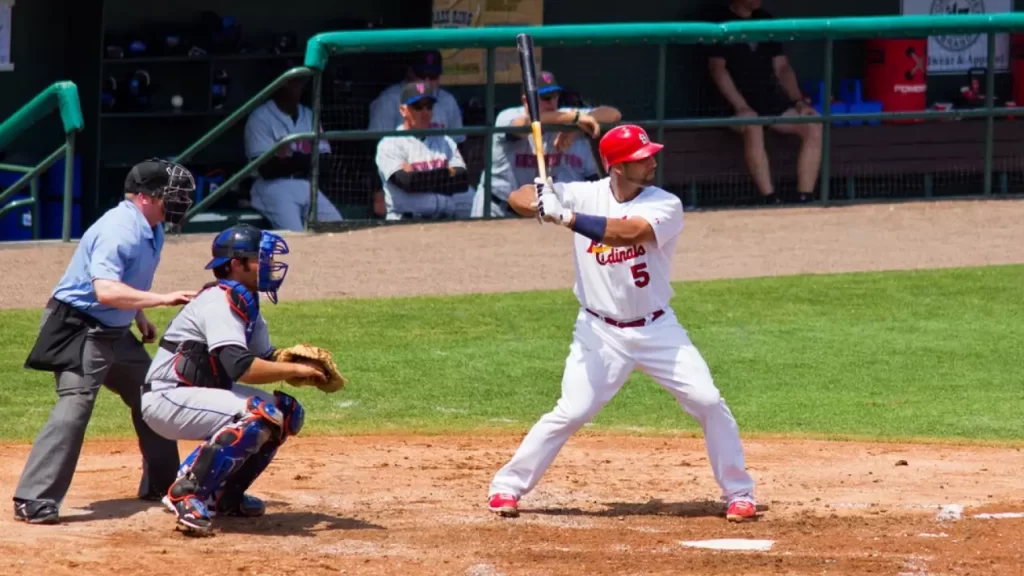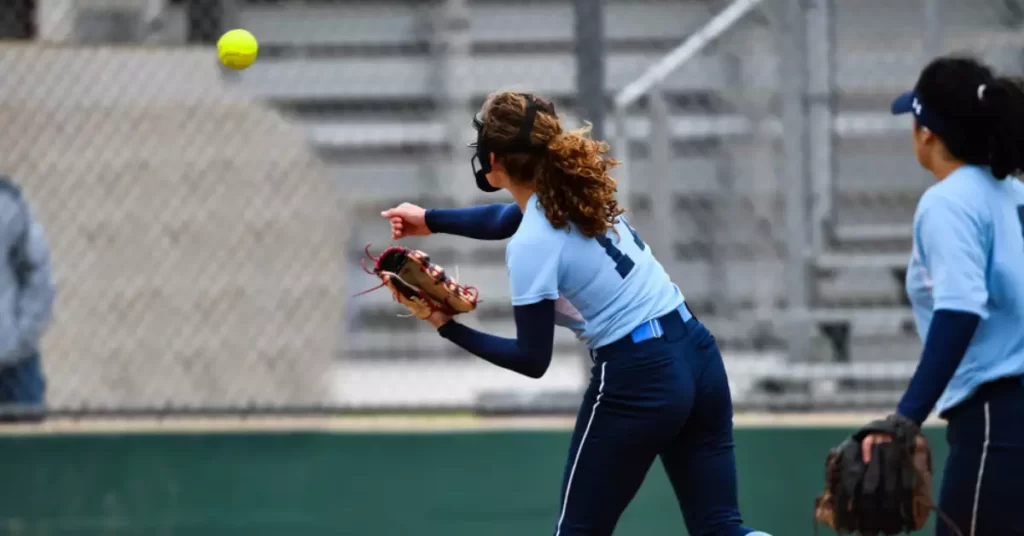Speed and agility are essential components of fastpitch softball, a thrilling sport that keeps players and spectators on their toes. Captivating audiences with its high-energy gameplay, fastpitch softball showcases the impressive skills of athletes.
Fastpitch softball is characterized by rapid pitching speeds, typically ranging from 40 to 70 mph for various age groups and skill levels. This information sheds light on the exciting nature of the sport, as well as the incredible skill required to excel in it.
Delve into the world of fastpitch softball as we explore the factors that influence pitching speeds, the impact of velocity on gameplay, and the techniques employed by athletes to master their craft. This in-depth analysis will offer a deeper appreciation for the exhilarating game of fastpitch softball.
The Evolution of Fastpitch Softball
Historical Overview
Fastpitch softball has its roots in the late 19th century when it was known as “indoor baseball.” The game eventually moved outdoors and evolved into a faster-paced sport, with pitchers using windmill-style pitching to generate incredible speed.
Popularity and Growth
Today, fastpitch softball is a popular sport played worldwide, with a strong presence in the United States, Canada, Australia, and Japan. The sport is played at various levels, from youth leagues to international competitions like the Women’s Softball World Championship and the Olympics.

Understanding the Basics of Fastpitch Softball
Game Rules and Objectives
Fastpitch softball is played between two teams of nine players each, with the objective of scoring more runs than the opposing team. The game consists of seven innings, and the pitcher’s role is to throw the ball toward the batter, who tries to hit it into play.
Pitching Mechanics
Fastpitch softball pitchers use an underhand windmill motion to generate speed. This windmill motion, combined with a powerful stride, creates a whipping action that propels the ball toward the batter at high velocity.
Factors Affecting Pitch Speed in Fastpitch Softball
Pitcher’s Strength and Technique
A pitcher’s ability to generate speed depends on their strength, flexibility, and technique. A strong core, explosive leg power, and proper mechanics are crucial for generating speed.
Ball Grip and Release
How a pitcher grips the ball and their release point can impact pitch speed. Gripping the ball too tightly can slow down the pitch, while an optimal grip and release can maximize velocity.
Wind and Weather Conditions
Environmental factors like wind and air density can affect pitch speed. A strong tailwind can increase the speed of the pitch, while headwinds can slow it down.
Comparing Fastpitch Softball to Other Pitching Styles
Fastpitch vs. Slowpitch Softball
In slowpitch softball, pitchers use a slow, high arching motion to deliver the ball, resulting in a slower pace of play.
Fastpitch softball, on the other hand, is characterized by its high-speed pitches and dynamic gameplay. The pitching styles demand different skill sets and strategies from both the pitchers and the batters.
Fastpitch vs. Baseball Pitching
Although fastpitch softball and baseball pitching share some similarities, they differ in several aspects. Baseball pitchers throw overhand, while fastpitch softball pitchers use an underhand windmill motion.
The pitching distance is also shorter in fastpitch softball (43 feet for women and 46 feet for men) compared to baseball (60 feet, 6 inches). These factors contribute to different pitch speeds and trajectories, with baseball pitches generally being faster.

The Science Behind Fastpitch Softball Speed
Kinetic Chain and Muscle Activation
The speed of a fastpitch softball pitch is a result of a well-coordinated kinetic chain. A pitcher’s body acts as a series of interconnected links, transferring energy from the ground through the legs, hips, core, and arm to the ball. Proper muscle activation and timing are crucial for maximizing pitch speed.
Aerodynamics of the Softball
The design and composition of a softball also play a role in its flight and speed. The raised seams on the ball create turbulence in the air, affecting the ball’s movement and speed. A well-thrown fastpitch can experience minimal air resistance, allowing it to maintain its velocity as it travels toward the plate.
Fastpitch Softball Pitching Records and Milestones
Fastpitch softball has seen numerous pitching feats throughout its history. Some notable records include:
- Fastest recorded pitch: 77 mph by Monica Abbott (USA) in 2012.
- Most strikeouts in a seven-inning game: 21 by Cat Osterman (USA) in 2007.
These achievements showcase the exceptional skill and power of fastpitch softball pitchers.
Training and Techniques to Increase Pitching Speed
Strength and Conditioning
To increase pitch speed, pitchers should focus on developing their overall strength, particularly in the legs, core, and upper body. Exercises like squats, lunges, and core work can help build the necessary muscle for powerful pitches.
Drills and Practice
Regular pitching practice and drills can help refine a pitcher’s technique and improve their speed. Working with a coach or using video analysis can provide valuable feedback for fine-tuning mechanics.
Mental Preparation
Mental preparation is also essential for a fastpitch softball pitcher. Developing mental toughness, focus, and confidence can help a pitcher perform at their best in high-pressure situations.
The Future of Fastpitch Softball
As the sport of fastpitch softball continues to grow, the development of new training methods, equipment, and technology will likely lead to even faster pitch speeds and more impressive athletic feats.
Frequently Asked Questions (FAQs)
1. What is the average pitch speed in fastpitch softball?
The average pitch speed in fastpitch softball varies depending on the age and skill level of the players. For high school and collegiate players, average pitch speeds typically range from 55 to 65 mph. Elite-level pitchers can reach speeds of 70 mph and above.
2. How does the pitching distance affect pitch speed in fastpitch softball?
The pitching distance in fastpitch softball is shorter than in baseball, which can make the pitches seem faster to the batter due to less reaction time. However, the actual speed of the pitch is generally slower than in baseball due to the underhand windmill motion.
3. Can males play fastpitch softball?
Yes, males can play fastpitch softball, although it is more commonly associated with female athletes. There are men’s fastpitch softball leagues and tournaments, and the sport is played at various levels, from recreational to competitive.
4. How can I improve my fastpitch softball pitch speed?
Improving your pitch speed involves a combination of strength and conditioning, refining your pitching mechanics, and mental preparation.
Focus on building strength in your legs, core, and upper body, and work with a coach or use video analysis to fine-tune your pitching technique. Additionally, develop mental toughness and focus to perform at your best in high-pressure situations.
5. What are some common pitches thrown in fastpitch softball?
Fastpitch softball pitchers use a variety of pitches to keep the batter off-balance and guessing. Some common pitches include the fastball, changeup, curveball, dropball, riseball, and screwball. Each pitch has a unique movement and speed, making it challenging for the batter to predict and hit.
Conclusion
In the realm of fastpitch softball, speed plays a pivotal role in determining the game’s outcome. It is important for players to develop their skills and agility to keep up with the ever-changing dynamics of the sport. As a fan or athlete, knowing the significance of speed in fastpitch softball adds to the overall experience.
To sum up, fastpitch softball is a high-octane sport that demands quick reflexes and precision from its players. Embracing the thrill of the game, understanding the importance of speed, and appreciating the skillful techniques employed by athletes elevates one’s experience as a spectator or participant.
